by Cristina Ramos // Feb. 22, 2022
Nicolas Pelzer is a Berlin-based artist whose multimedia body of work—including sculptural installations, video and digital prints—focuses on technology and its effects on current value systems in the real, physical world. The presence of his work in the exhibition space is also strongly connected to the human body. He believes that the notion of the body is one of the strongest standpoints that exposes the limitations caused by changes in technology, and our current lifestyles.
Recently, Pelzer has become interested in including elements related to historical technology from different eras in his works, such as prehistoric stone tools or modern machines. Creating high-resolution scans of small objects, he displays them as 3D prints or 3D objects. The result is unfamiliar sculptures and two-dimensional works that rarely reveal their original models at first glance.
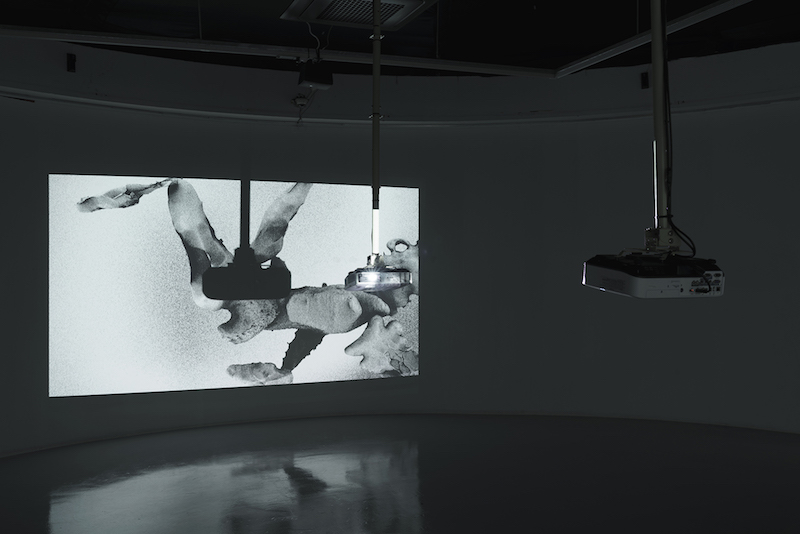
Nicolas Pelzer: ‘Souls Always Return to Itself,’ 2019, Video installation, full HD, sound, 04:46 min, loop, dimensions variable, installation view Nanji Seoul Museum of Art, Seoul // Courtesy of the artist
Cristina Ramos: What are the roles of simulation and virtuality in your practice? Very often in your practice, the action that has created the works is purely digital.
Nicolas Pelzer: My work highlights the current world of physical things, which is massively changing under the expansion of digital existences. My recent works were largely conceived on computer and later transferred to our human world, shaped with various materials. For example, the work series ‘Wear and Tear’ (2019–2021) presents computer-generated scratches and signs of wear. These are traces of 3D-objects, such as fingernails or pitchforks, which were simulated in a computer governed by an imitation of physical laws like gravity, forces and resistance. On the other hand, my video installation ‘Souls Always Return to Themselves’ (2019) features animated objects like a dancing figure made by joining flint stones. Likewise, the stones’ movement was calculated in a weightless space and set in motion by virtual wind. With this approach, I am setting a fictional environment defined by various ranges of material parameters. Additionally, those scenarios are translated back to different physical forms like prints or moving-image projections. In the end, I wish to enable us to confront other forms of existence in the exhibition space.
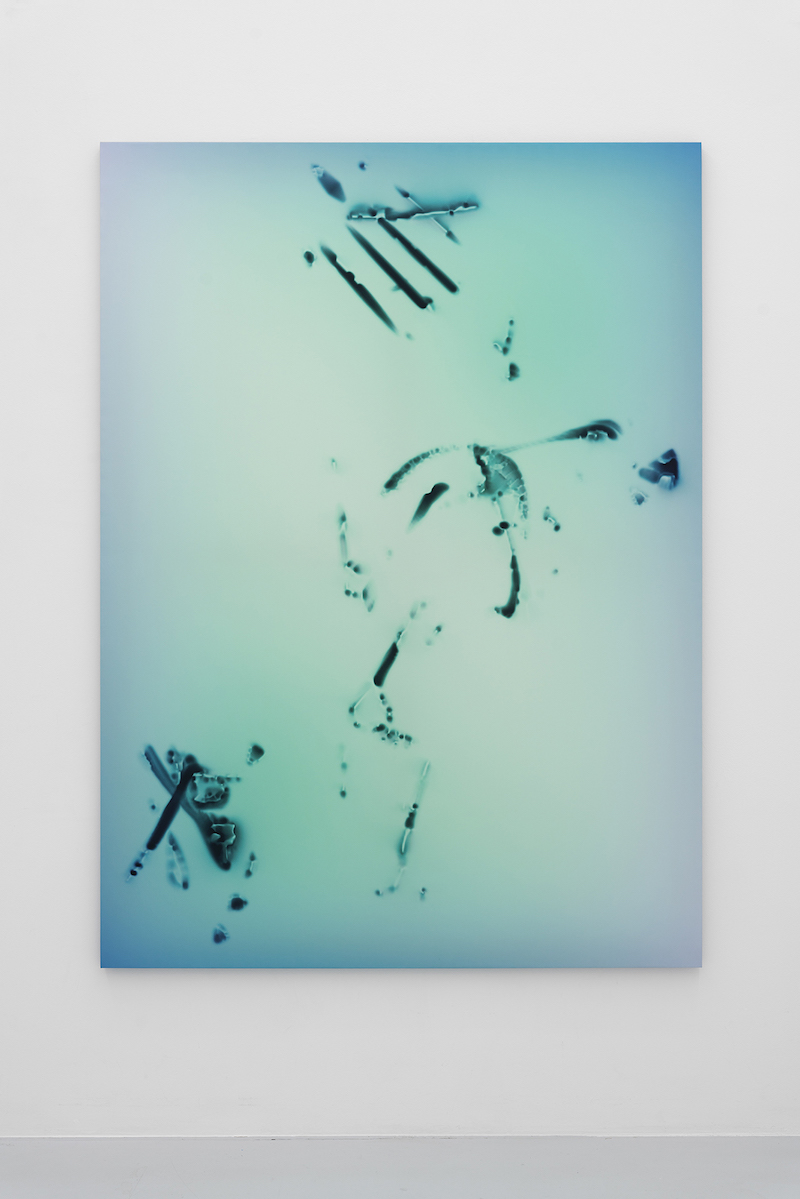
Nicolas Pelzer: ‘Wear and Tear (Pitchfork),’ 2021, dye-sublimation print on fabric, 180 x 130 cm // Courtesy of the artist
CR: I wonder what the definition of a digital object might be for you, taking into account that your pieces refer to or take as a starting point objects from your daily life? It’s important to think about the possibilities that digital processes can offer in enlarging our vision of the world, making visible what remains microscopic, for instance.
NP: Probably you’re referring to my 3D-printing based works ‘The Unused Five’ (2019) and ‘Nervous Pickers’ (2021). They are based on special high-resolution 3D-scans of very small objects, such as cut-off fingernails, chewed toothpicks or, as in the case of ‘Force’ (2021), crumbled beef jerky. Most of these objects are closely associated with the human body, and are connected to muscular power on different levels. While I enlarge and alter them in the computer, they present a kind of abstraction: the shape of each object inevitably derives from a smaller, almost microscopic world, where things look different, entangled within their surroundings.
The 80s thought experiment Gray Goo, a hypothetical catastrophic scenario triggered by tiny, nano-sized robots, inspired me greatly. These little machines are designed to replicate themselves endlessly by consuming our biomass. Once triggered, they can cause a global environmental catastrophe. In this scenario, our world is simply eaten up by a sort of intelligent grey slime—humans cannot prevent it, due to the size gap between the robots and the human body. Today’s reality is increasingly taking place in a much smaller size, in which we can no longer directly and actively participate. At least not in the way we used to interfere with technical objects during the machine age, due to the limitations of our own bodies. By enlarging objects in my work, I revert such phenomena and bring the objects back to our human world with the aim to draw attention to this discrepancy.
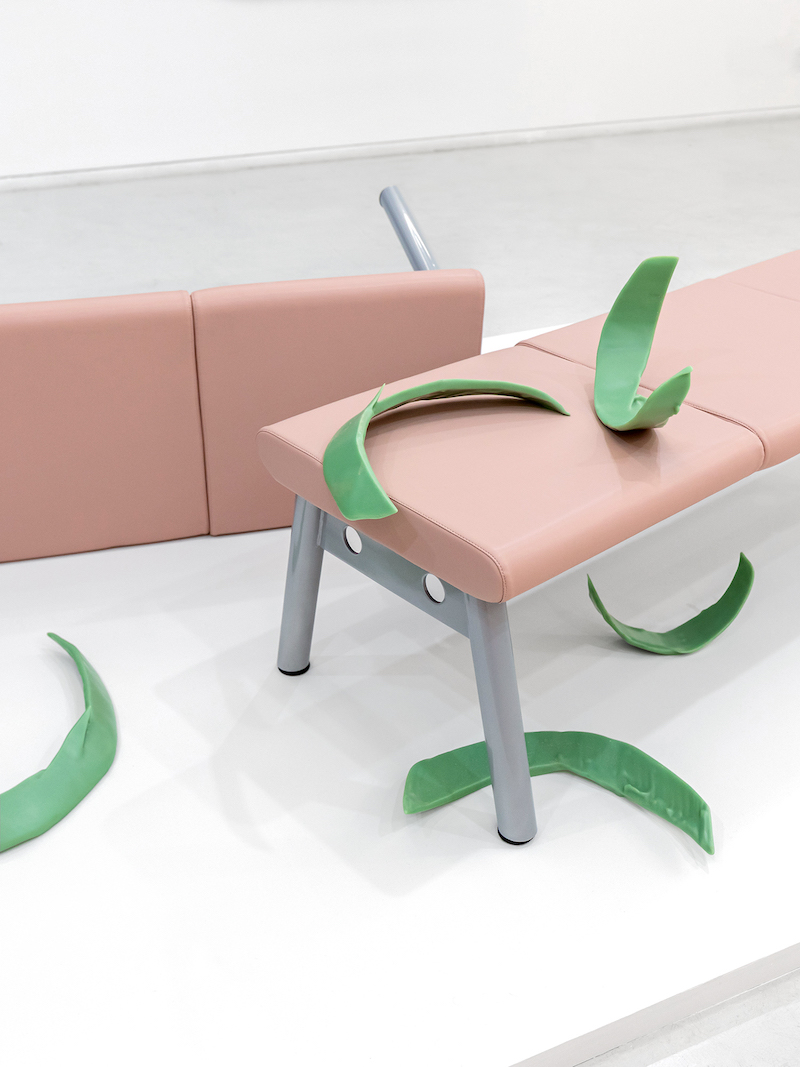
Nicolas Pelzer: ‘The Unused Five,’ 2019, polyurethane, pigment, benches, installation view Art Space BOAN, Seoul // Courtesy of the artist
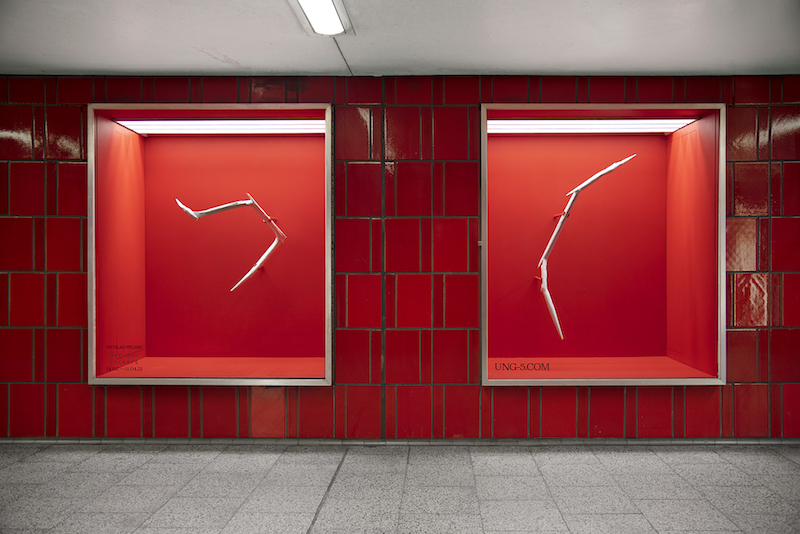
Nicolas Pelzer: ‘Nervous Pickers,’ 2021, polylactide (PLA), lacquer Dimensions variable, installation view Ung5, Cologne // Courtesy of the artist
CR: Do you think that digital objects can be a transactional device that we can use to trace the infrastructure through which they circulate? In this sense, are there any traces of the digital process left in your works?
NP: The key difference that distinguishes a digital object from a mechanical object is that it is characterised by interconnectivity and its relationship to a network. What we’re witnessing is the disappearance of real things. By now, things are less characterised by their material or mechanical quality, but rather by the quality of their network and software. They exist in the form of interface, while their real material part—like the hardware—constantly needs to be renewed. This leads us to a lack of emotional bonds with objects. However, I don’t think this vanishing process will move endlessly forward into the seemingly immaterial. Since we as humans dwell in our bodies, we also need solid things in our lives. They secure us a level of material stability and continuity. Like a memento mori, they remind us that even the smallest piece of information would still need a physical host to exist. The digital seems to eliminate things from our physical environment. But, in fact, no matter how small a movement in the virtual world would be, it simultaneously influences the physical world.
The digital background in my work is not always visible on the surface. That’s probably due to my production processes avoiding generally known aesthetics of the digital. In this sense, my work could be seen as a trace or remains of simulations, which managed to emerge in our real world.
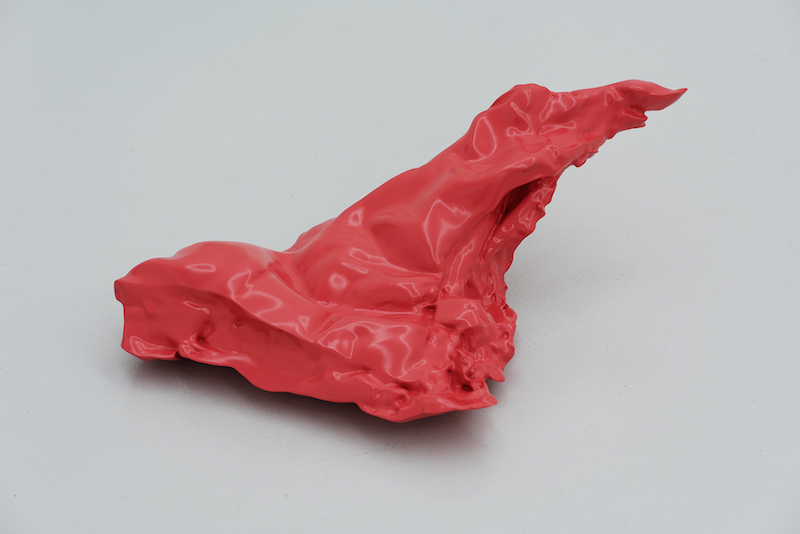
Nicolas Pelzer: ‘Force,’ 2021, polylactide (PLA), lacquer, dimensions variable // Courtesy of the artist
CR: In the words of philosopher and computer scientist Yuk Hui, the materiality that we call “digital” describes relations that are not possible to be inscribed in analogue technologies. Thus, digital objects are statements of the technical systems that create them, based on logical and formal operations. What is your relation—from the perspective of the human body—with this process?
NP: I think you can find the essence of technology only through observing the relationship between the human and the technical object. I am currently more interested in this particular relation and the history of technical objects, than their projections of the future like in science fiction. When we observe the evolution of technical objects—for example the development from a flint stone to a steam engine—we can see how the relationship between human and machine has changed over centuries. Look at the function of the human hand with regard to the decreasing need of muscular power for a greater control of our fingers. Over time, tools and machines have gradually taken over the hands’ force and eventually their responsibility, as well. This aspect shows the impulse of technology and where it might go in the future. It is precisely this dependency that I have tried to reflect in my work over the last years. The bond of humans and technology changes over time, but it remains a mutually dependent relationship.
This article is part of our feature topic of ‘Digital.’ To read more from this topic, click here.






















